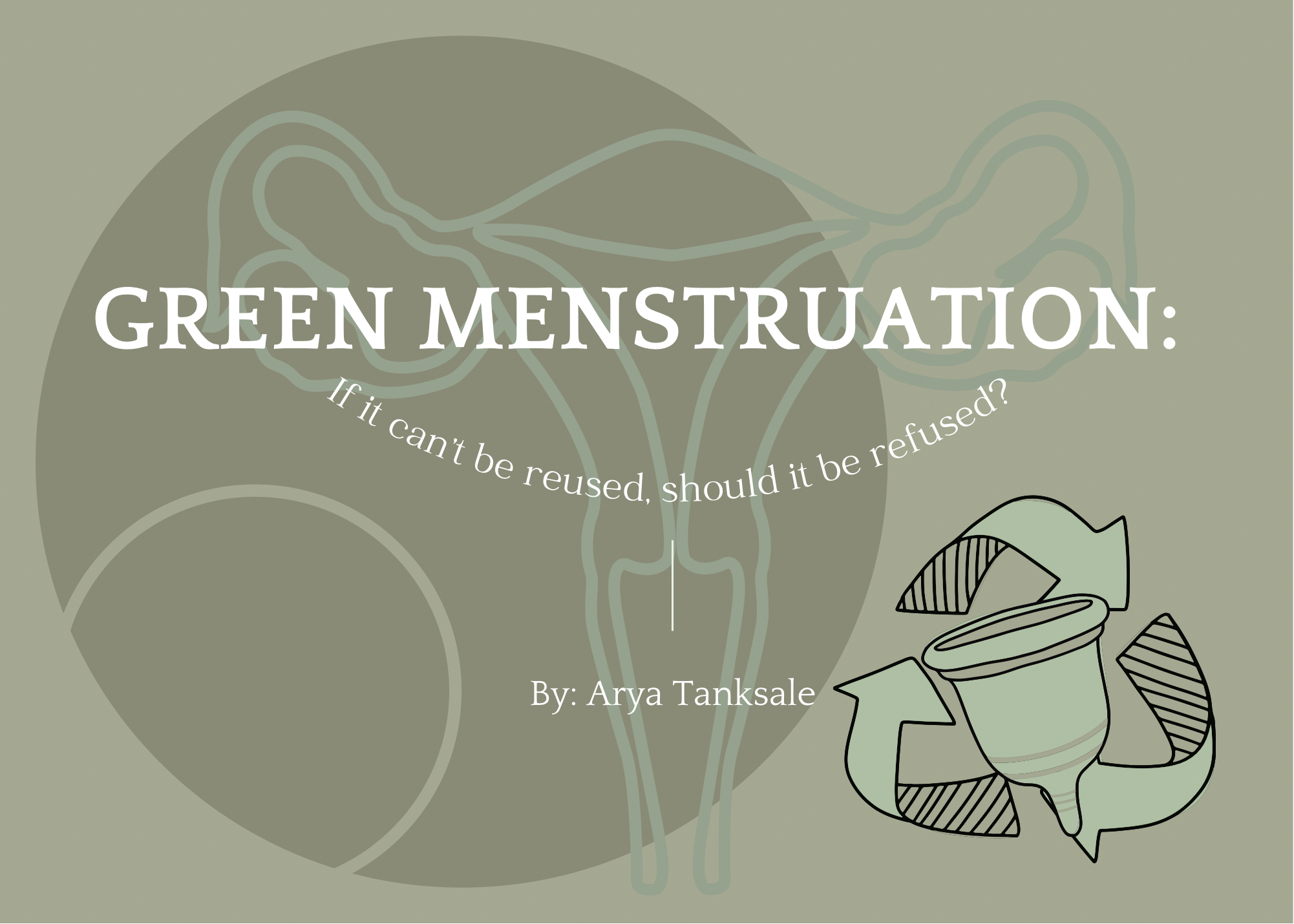 Author: Arya Tanksale
Author: Arya Tanksale
Editor: Samantha Yip
Graphic Editor: Miranda Kreal
Consider that on average, over a period of 38 years of menstruation, a woman uses over 11,000 disposable menstrual products. When accounted for, this creates more than 200,000 metric tons of waste annually! With the urgent climate crisis, global citizens are aiming to live more sustainably, and have popularized practices like thrifting, vegan diets, and the usage of reusable straws. So, can this practice of sustainability be applied to a waste-inducing yet inevitable biological process like menstruation? There are several menstrual products on the market that are not only more sustainable, long-lasting alternatives, but also cost-effective due to policies like the “pink tax” (the added tax on products marketed toward women).
Menstrual cups are the most common of these products. Unlike pads and tampons which absorb menstrual fluid, menstrual cups collect it in a flexible bell-shaped cup. Made up of silicone and latex, a single menstrual cup costs less than $40. Policies such as the pink tax have caused feminine hygiene products to be highly requested in food pantries and homeless shelters. In fact, organizations rarely have enough pads and tampons to meet the demand. In states like California, women pay more than $20 million in taxes per year on feminine products. Menstrual cups last up to ten years, which would significantly reduce the amount spent on period products (which averages about $6,360 in a woman’s lifetime).
So how exactly do menstrual cups work? When menstrual cups are inserted, they rest against the vaginal wall and create a seal to prevent leaks. They can be used for six to twelve hours before they need to be emptied, rinsed, and reinserted. Chemical testing by numerous organizations have found that tampons contain harmful chemicals like phthalates, dioxins, and parabens. While there needs to be additional research done to assess the chemical’s impact on human health, the U.S. Food and Drug Administration currently does not require pad and tampon companies to disclose ingredient listings. Menstrual cups are most commonly made of medical-grade non-toxic and non-allergic silicone, making them safe for use.
Overall, the long-term cost-effectiveness and environmental friendliness of menstrual cups make it a viable sustainable menstrual product. With rising attention to the effects of pollution and waste on the global climate crisis, it is essential now more than ever to consider switching to using menstrual cups and gain the convenience and ease that comes with a more sustainably managed period.









